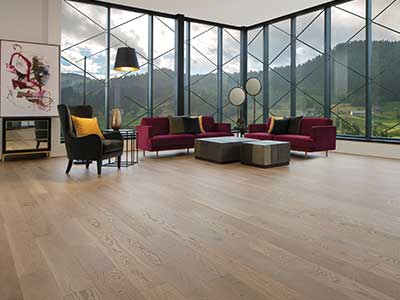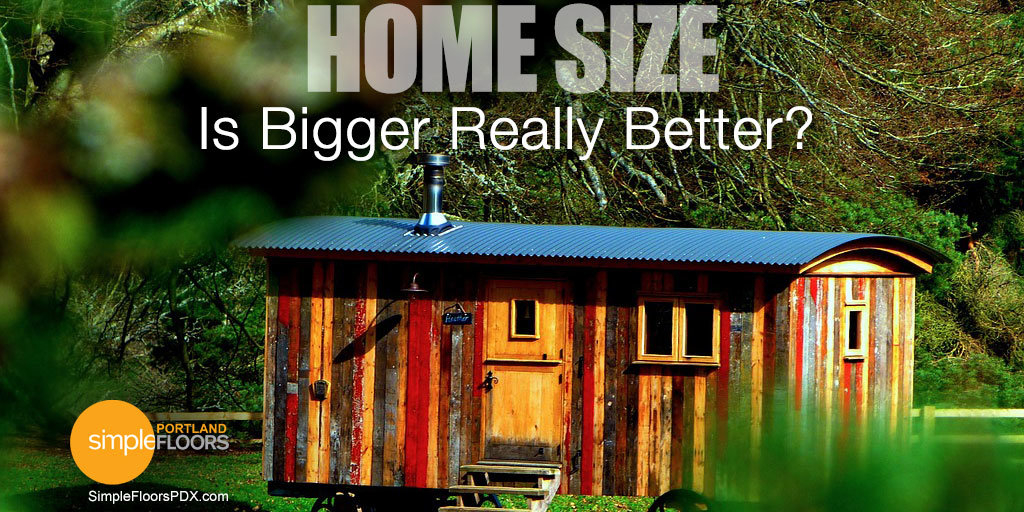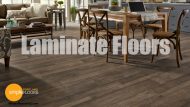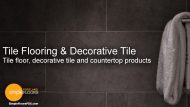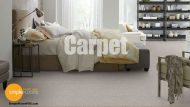By now, we’re sure we’ve all found ourselves flipping through channels late at night and stopping for a few moments to watch some show that we came across about tiny houses. And, as we sat there with remote in hand and dog faithfully at our side, we pondered.
“Could I do that?”
Yet, as romantic as TV shows have portrayed life in a tiny home, it does beg the question as to size and does it really matter after all? According to the U.S. Census Bureau, the median size of the single-family home increased every year in size from 1978-2015, peaking at 2,467 square feet. But, in 2016, the average square footage began to shrink and is no longer expanding as it had been.
Maybe these shows were on to something? Albeit, maybe not to the extreme of going all-in with a tiny home. But, with home size, is bigger really better?
How Much Space Do We Really Use?
This is a great question in that how often do we walk through our own homes and take inventory of how we are using our space? If we could, I’m sure that for many, if there was a way to charge rent to our stuff, we’d cover mortgage, and then some. This thought alone led a team of anthropologists to produce a book called “Life at Home in the 21st Century” that claimed, “Contemporary U.S. households have more possessions per household than any society in global history.”
Raise your hand if you have a spare bedroom or bathroom that doubles as storage space? But outside of using space for storing our stuff, how much space in our home do we really use?
According to the study that led the team from UCLA to write that book, was their findings on how people (dual-income families) interacted with the stuff they spent good money on. In this, they gained some very interesting insight about how little we truly do use our space.
In the study alone, there were no surprises as to what spaces in the home families congregated in the most. The two primary areas were eating and television. Makes sense. But with homes that also include bedrooms, dining rooms, living rooms, family rooms, garage, porch and the list goes on, how do we use the rest of that space other than then obvious?
Coincidentally, they also found that only 25% of the garages in the study were used to store cars. Most were chalk full of stuff.
Multiple Generations Make Bigger A Necessity
In 2014, Pew Research reported that a record 19% of the US population lived with multiple generations living under one roof. Within those numbers, it was also found that an astounding one-fifth of Americans older than 55 live in a multigenerational home, as well. Maybe it’s time to get that spare bedroom and bathroom ready? But, how much is all this space worth?
How Much Is Square Footage Worth?
Recently, GOBankingRates conducted a study where they asked the question of how much home can you buy for $300,000 in every state. Curious to see where Oregon fell on this list compared to the top 5 states where you could get the least amount of square footage for $300,000, we took a look.
How Much Home You Can Buy For $300,000
1. Washington D.C. – 603 square feet
2. Hawaii – 625 square feet
3. California – 1,066 square feet
4. Massachusetts – 1,327 square feet
5. Colorado – 1,471 square feet
6. Oregon – 1,588 square feet
Is Bigger Better For You?
For certain, knowing what you want in a home also needs to line up with knowing what you need. And, in looking at what builders are building, it’s bigger houses on smaller lots. Sure, it’s a bigger space, but is that space usable? Is it practical? We like how one realtor recently put it, “You don’t always need more rooms; sometimes you need more spacious rooms.”
Are you planning to start a family? Will your kids stay at home while they attend college? Will that spare room be for mom and dad as they age? Do you like to entertain?
Is Smaller Better For You?
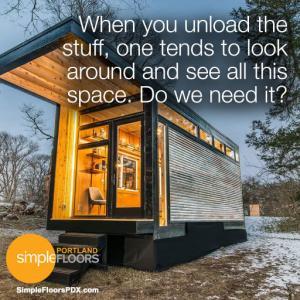 We have to admit, the idea of downsizing through all of the stuff that’s been accumulated would feel really nice. A friend, who recently prepared to move cross country did this very thing. Of course, the result was that they never wanted to have another garage sale the rest of their life, but it felt great to unload everything but the necessities as well as the items that mattered most and carried sentimental value. It’s funny, when you unload the stuff, one tends to look around and see all this space. Do we need it?
We have to admit, the idea of downsizing through all of the stuff that’s been accumulated would feel really nice. A friend, who recently prepared to move cross country did this very thing. Of course, the result was that they never wanted to have another garage sale the rest of their life, but it felt great to unload everything but the necessities as well as the items that mattered most and carried sentimental value. It’s funny, when you unload the stuff, one tends to look around and see all this space. Do we need it?
Can Less Be More?
Did you know that almost 84% of new homes feature an open floor plan? This type of floor plan offers increased fluidity within the home with less walls that delineate between dining room, living, and kitchen. Maybe that realtor was right, it’s not about more rooms, but more spacious rooms? And speaking of the kitchen, here’s another did you know in that home buyers have shown to pay upwards of 40% more to have an “eat-in” kitchen. Essentially, this is a kitchen with an open floor plan in it of itself. These kitchens with large center islands can do what? Eliminate the need for a formal dining room.
How About You Be You?
No matter it be a bigger house or even one of those tiny houses, finding the right home where you can be you is really all that matters most. Whether you need help with storage and outfitting your home with smart usage of space with increased cabinetry, or you want to make that special room feel that much more spacious with the right flooring, Simple Floors Portland is here for you.

